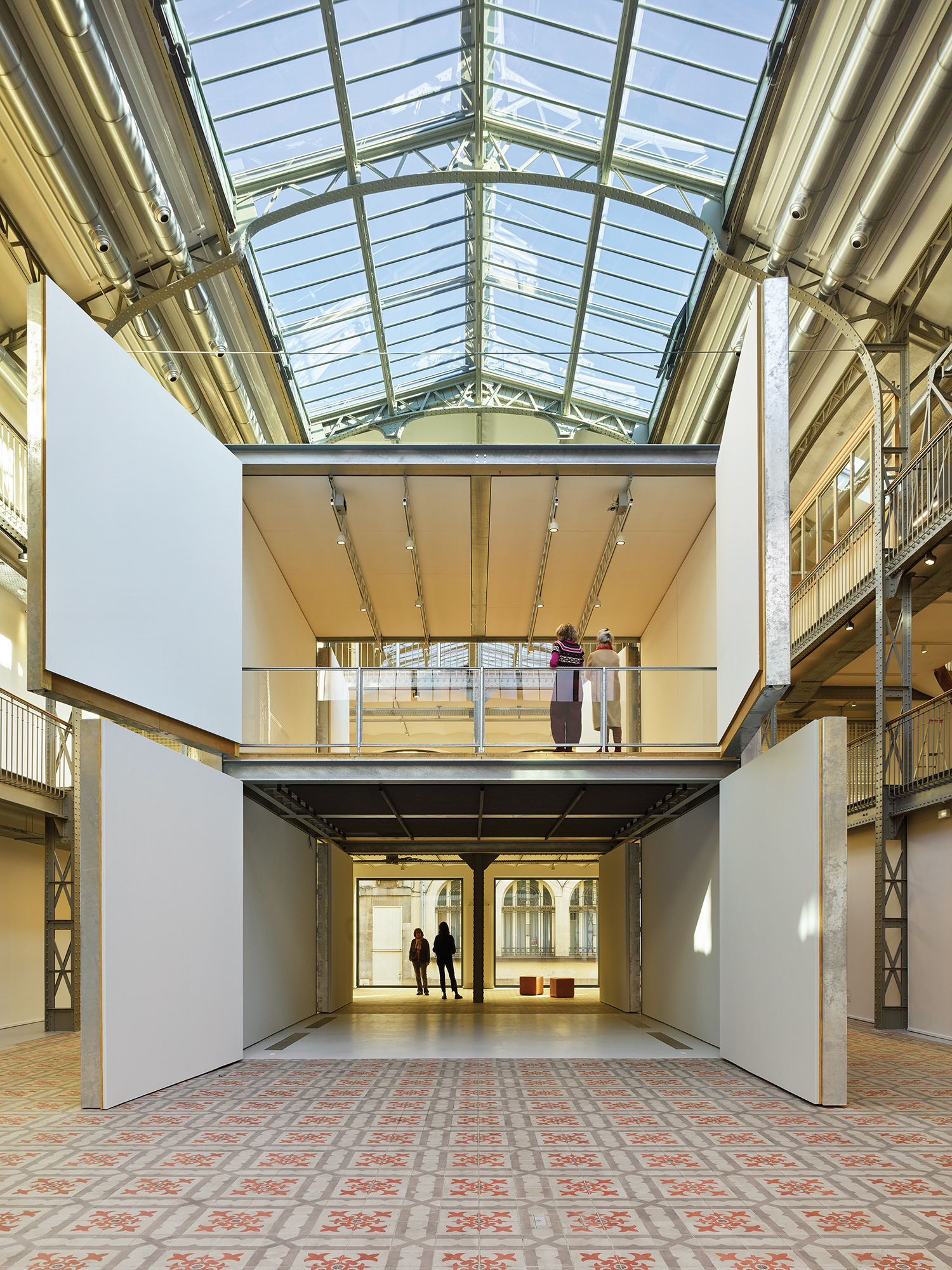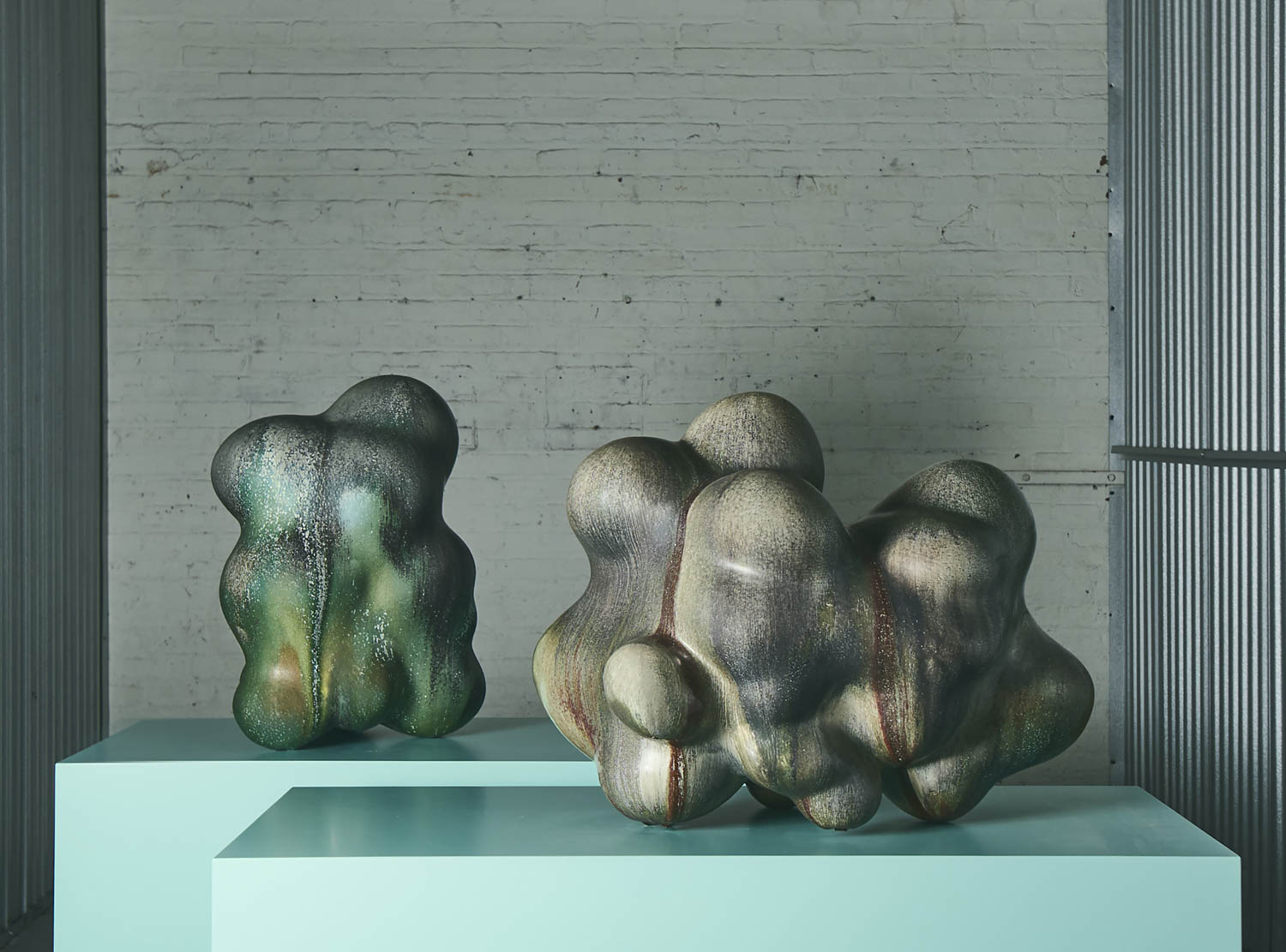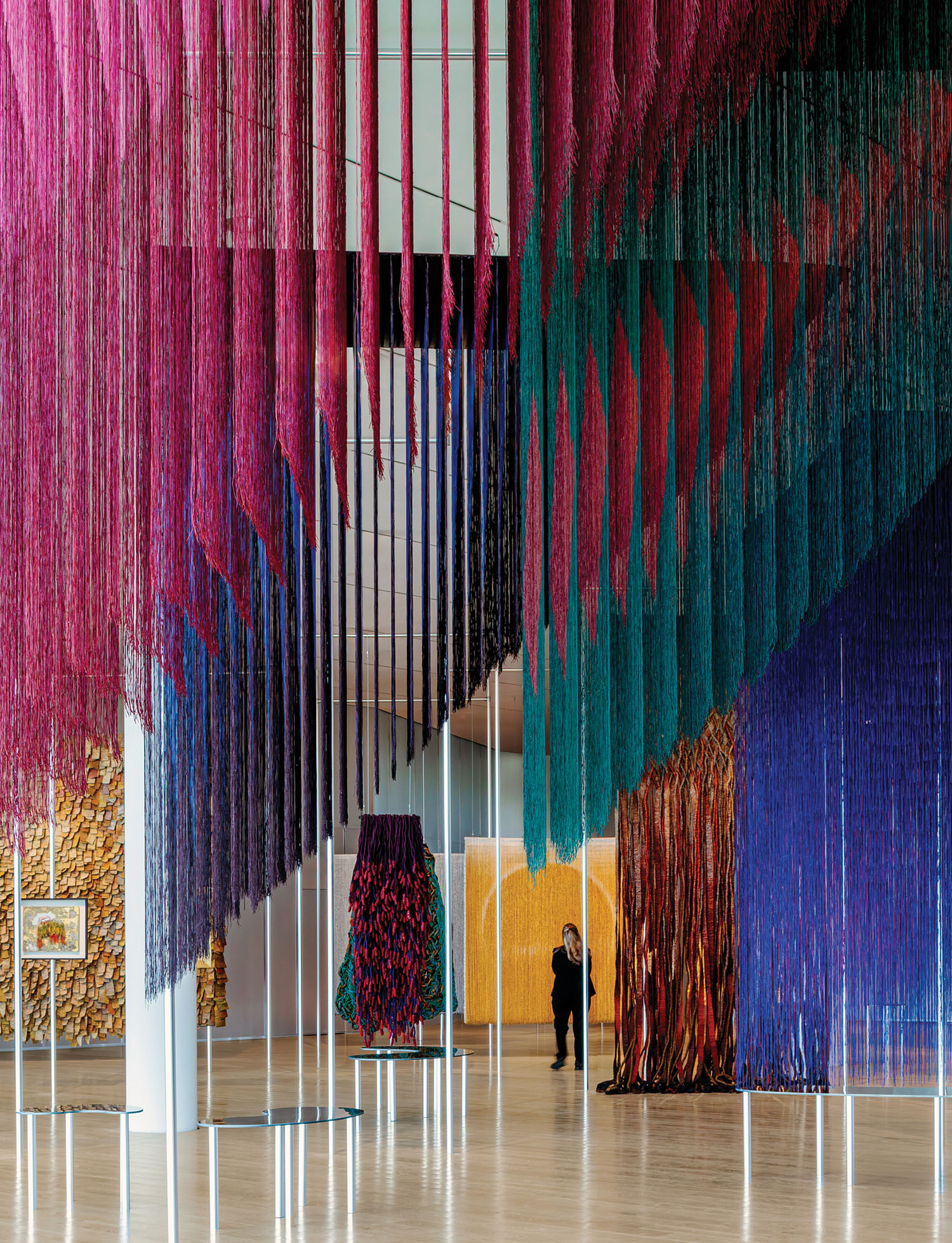10 Questions With… Kate Thatcher of Architecture + Information
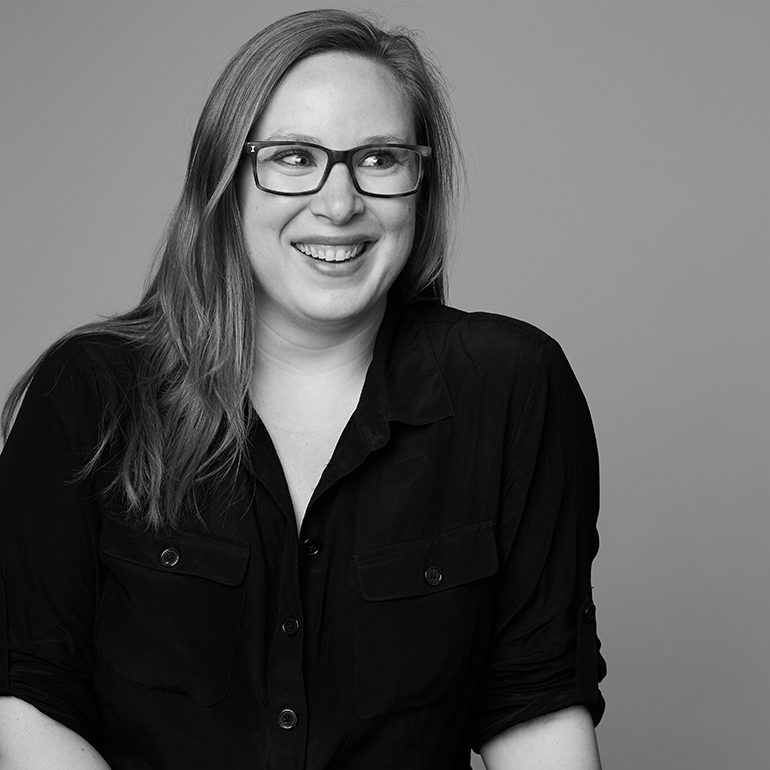 Since its founding by Brad Zizmor and Dag Folger in 1996, New York City’s Architecture + Information (A+I) has made a name for itself designing workplaces that respond to individual needs on major scales. Its first CEO, Kate Thatcher, wants to take that mission further, pushing A+I not just to envision blockbuster headquarters for Equinox and large-scale projects for Vornado in complex neighborhoods like Penn Plaza, but to rethink the profession itself. Recent efforts like A+I’s gender equality pay initiative and +IMPACT social justice platform seek to encourage the participation and success of women in a field often hostile to them, proving that ethics can be as central to workplace quality as any layout or material. Here, in a conversation that has been edited and condensed, Thatcher discusses her company’s initiatives, what we might leave behind as we re-enter workplaces, and how to overcome resistance to progress for women in architecture and design.
Since its founding by Brad Zizmor and Dag Folger in 1996, New York City’s Architecture + Information (A+I) has made a name for itself designing workplaces that respond to individual needs on major scales. Its first CEO, Kate Thatcher, wants to take that mission further, pushing A+I not just to envision blockbuster headquarters for Equinox and large-scale projects for Vornado in complex neighborhoods like Penn Plaza, but to rethink the profession itself. Recent efforts like A+I’s gender equality pay initiative and +IMPACT social justice platform seek to encourage the participation and success of women in a field often hostile to them, proving that ethics can be as central to workplace quality as any layout or material. Here, in a conversation that has been edited and condensed, Thatcher discusses her company’s initiatives, what we might leave behind as we re-enter workplaces, and how to overcome resistance to progress for women in architecture and design.
Interior Design: When did you first become interested in architecture?
Kate Thatcher: I went to the University of Virginia not really intending to study architecture; I was interested in comparative politics, government, and languages. But after signing up during first-year orientation, there was an open elective spot where you could take anything you want. I was trying to think of the most random thing to take in the spirit of being in college, so I took Architecture 101. It was fortuitous because I became addicted very quickly and switched my major to move into the School of Architecture. My lecture course was taught by the amazing, kind of out-there professor Peter Waldman. I learned that architecture addresses the entirety of the human condition. Anything you’re interested in—music, philosophy, politics—you can look at through the lens of architecture and design. It’s all-encompassing, and that keeps me excited today.
ID: What was your first job in the industry?
KT: It was at A+I. A friend and former classmate was working here and got me an interview. I worked here for three years, left to get my Masters at Yale, and then came back to the city to work for about a year or so with a couple of former professors. In 2011, I found my way back to A+I and have been here ever since. I was originally interviewed by [current chief design officer] Sommer Schauer. Being interviewed and hired by a woman, and having Sommer as a mentor and friend, has been an amazing experience. The company was very small when I arrived, but from the beginning there was a strong presence of women in leadership positions, running projects and client engagements and being involved in hiring.
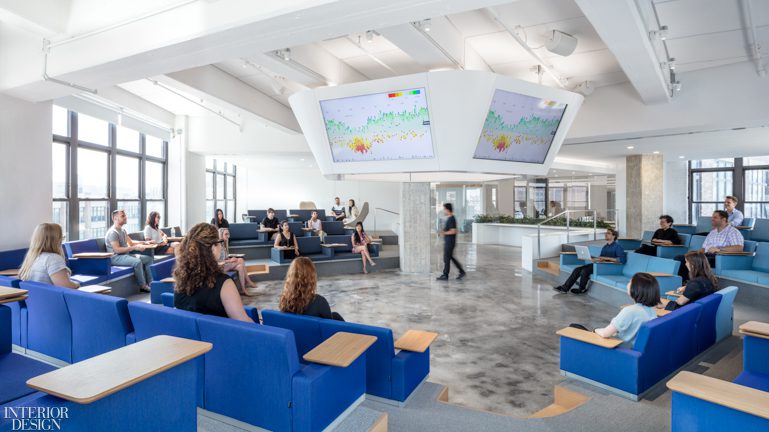
ID: Why was that important to you?
KT: Well, we’ve all seen the statistics around the rates of women professional architects relative to men. Graduating classes are basically 50-50, but if you look a few years into the future, women only represent 18% of the field. So something is happening in professional practice that is not supporting women. Women and people of color leave the field at much greater numbers than men. Why is the professional atmosphere, as opposed to the educational sphere, so hostile to them? There are a couple persistent, outdated narratives which I reject wholly. One is that, in architecture, the profits are very low and we can’t afford to do what other companies do to support employees—like paying for healthcare, ample parental leave, paying and making time for licensing exams and study materials, or providing mentorship and career development opportunities. It’s incredibly short-sighted in terms of employee retention. You invest a lot in developing and training employees and then they feel this pressure to leave the industry at a time in their lives that coincides with life and family events, just when they have enough experience to really move into positions of running projects and leading teams.
As designers we love to be involved with projects from beginning to end, but we need to ask how can we make it accommodating for people to leave and come back, perhaps to different projects in different phases. This is a profession that is very demanding in terms of your time. It’s built into the educational model that you spend 16-20 hours a day there. When you have a family, or caregiving responsibilities, you cannot spend 20 hours a day at work. It can be a profession that rewards those that martyr themselves.
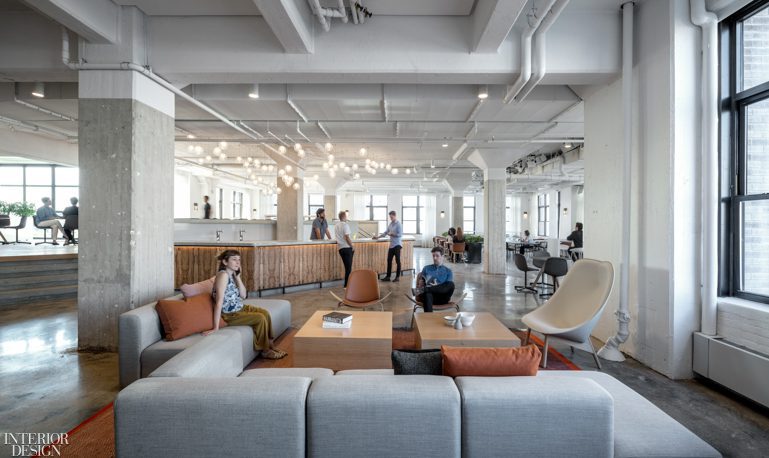
ID: There’s this macho idea of endurance and suffering, which is also a gatekeeping device. Particularly when women are paid less than men to participate in it, or shuttled into sectors that rely on caregiving because women are assumed to naturally be good at it. How does your gender pay equality initiative address all this?
KT: This is something we started, as a real passion project of mine, about five years ago. The first step was to start having conversations with the whole office about where we stood in terms of pay equity and the pay gap, which are two slightly different things. We ran an analysis, which of course opened a whole can of worms about things to put in place to even run the analysis itself. We had to become very clear and structured about positions across the office and what was required of people in those positions. That transparency alone helped individuals understand what skills they have relative to which job, the office expectations around each position, and what it would take to get promoted. So the next step was going position by position and making sure people who fell into those categories were paid the same for the same work.
The third step was going further. Frankly, it’s embarrassing that this country has problems with equal pay, because it’s the dead simplest thing to solve. You change the number and pay people the same. It should be a no-brainer. But once that was resolved in the office, we started to run gender pay gap analyses, like those that are required each year in the U.K. for companies with more than 200 employees. You run calculations across the company to find out not only if you are paying people the same but if you have representation across all levels of the company. We are about 65% women, so we wanted to see if we are 65/35 all the way from our most senior people to our most entry level. We are close, but not perfect. Our leadership is about 50% women. So each year we take the initiative to talk with the office and show how we are progressing to close the gap, and what programs need to be put in place. What I like is that the solutions are longer-term. It’s not just about cranking up someone’s paycheck. It’s about someone’s advancement, and whose voice matters over a long period of time.
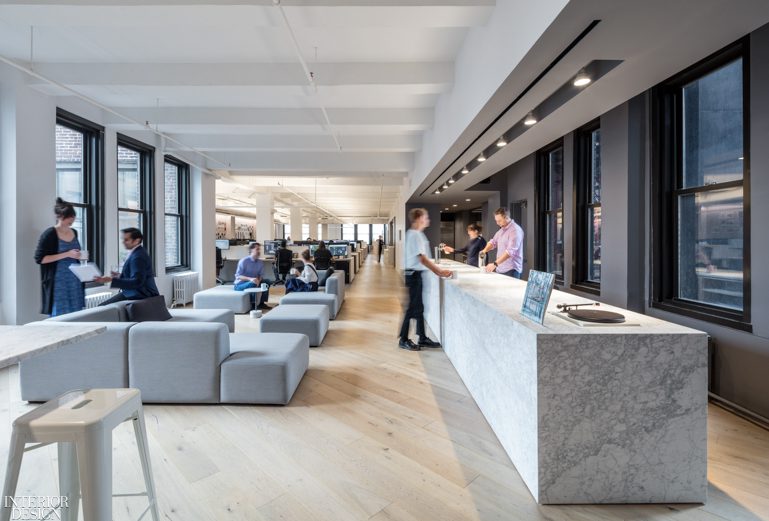
ID: These changes require a high level of transparency. What would you say to other firms that might be hesitant about enacting such an initiative?
KT: It took us a couple years to do it—so there’s no harm in starting. The journey towards progress is about, every year, asking ourselves what we can do better. We cover healthcare for everyone in the office, but we don’t cover dependent healthcare. That’s something in the future I hope we can do. I hope to contribute to dependents’ FSAs. You don’t have to do 100% from day one. You just have to make progress. But at least for yourselves, figure out where you are. You have to take stock. You don’t have to tell everyone at first, but at least run the math and know what the starting point is. You might be scared and find out it’s not as bad as you think it is. Or…you might be scared for a reason.
ID: What’s the impetus behind +IMPACT?
KT: It was another thing that came out of our asking ourselves what else we could be doing. 2020 threw so many curveballs, and one of them for us was around the calls for social justice and racial justice after the murder of George Floyd. We started to think about how we could, as an office, leverage our experience and talent and staff to push outside the four walls of A+I. So +IMPACT is a platform that allows all our employees to deploy company resources and time towards volunteer efforts. We want to see what impact we, as 70 individuals, can have in our architecture and design communities, our educational communities, and our local communities. And it’s a way to keep women and people of color from leaving the A&D field, by building a platform for the very best professional practices. So, big goals, starting small. But we’ve had employees volunteering to help around the terrible explosion in Lebanon, to engage with the NYC public school system around how to bring kids back to school and the design solutions around outdoor spaces, and other design efforts for the restaurant industry to figure out how to save our local economies. We launched in October, so it’s quite new. But people are starting to engage with it.
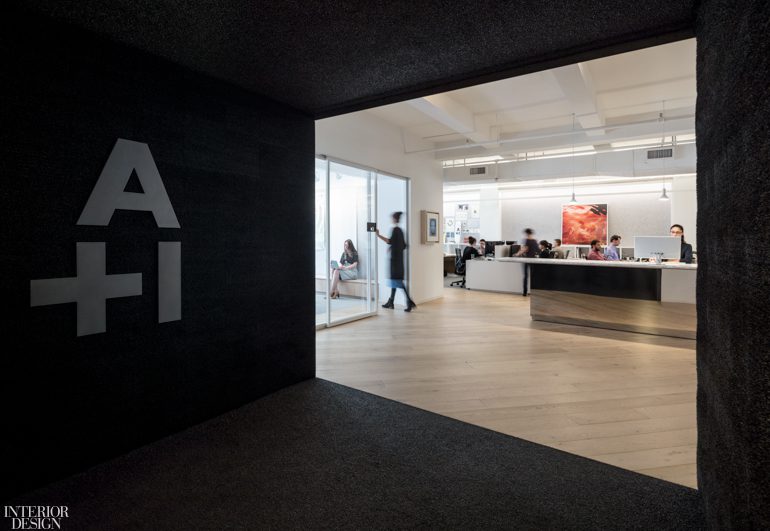
ID: 2020 certainly brought no shortage of issues to address. How was the year for the firm?
KT: It was a total rollercoaster just trying to move the whole workforce remote, and working with clients remotely, since designers are so collaborative and hands-on. Like everyone, we had some projects that went on hold and didn’t return, and others that did come back from being on pause, and thankfully some new projects as well. I wish it hadn’t happened this way, but it did bring a giant spotlight onto the question of the workplace. Why do people go to work? There are some important answers: connection to company mission and values, collaborations with colleagues, collective experiences that are about you as a human but also your work for an organization. Our clients are really interested in taking on these questions with us. And the solutions will differ. Some companies might decide to never go back, all remote forever. And some will pretend this all never happened, turn their offices back on from 9-5, and you’ll just show up. The vast majority will end up in a messy middle, but hopefully with more built-in flexibility. A largely hybrid workforce might allow bringing creatives back because they’re collaborating but letting accountants work on their spreadsheets from home; some clients want everyone back for team- or event-based activities. But we must understand that you can work from anywhere but there are compelling reasons to work from somewhere.
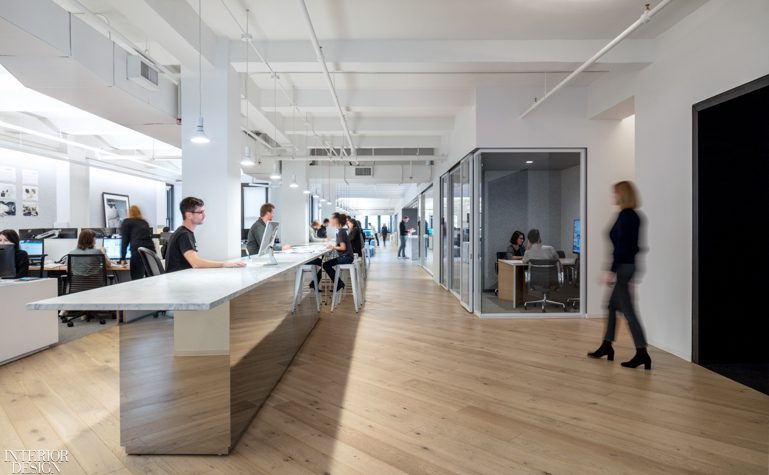
ID: Are there practices or ideas you think we might consider leaving behind as offices open back up?
KT: Some are operational, some a people-policy level, and some are programmatic. Building owner and development clients have been looking at programming buildings to support not just people’s work day but their whole day. This might include things like daycare, not offered by the employer but by the landlord. So you’d chose as a company to move into a building with amenitized services that support your employees—daycare, pet care, medical-grade wellness clinics that support the building and the larger community. It’s not just: Is there artisanal coffee and good music in the lobby? On an individual company level, speaking for women the idea of flex work is incredibly important. Women have left the workforce in incredible numbers. If you as an employee have had women leave, how can you make it easier for them to come back? Well, provide job security, flexibility, and services. There’s a movement in progressive companies, of not just supporting a worker. You have to support a person.
ID: What do you personally miss about your office?
KT: You always feel very responsible, as someone who leads a large organization, to get everything right. Had you known, last March, just how long you would ask your employees to do this, what would you have done? That’s been on my mind. If I had a magic wand, I would hit pause and let them have a break and reconnect with each other as humans, and friends, and colleagues who are invested in each other and like each other. The isolation and stress and anxiety, this long in this pandemic, has been very hard and that’s been on my mind. Even as we start imagining coming back together, I don’t think it’s going to be easy. It’s going to be a process for which people build a framework. I don’t know when we are coming back, but it is later. It’s in a bit.
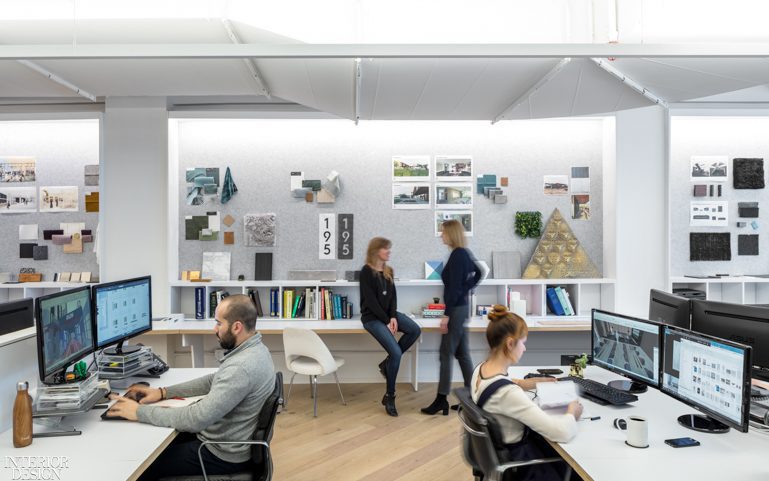
ID: I have to ask: What’s your own home office like?
KT: (laughs) It’s a bit embarrassing. So I spend very little time at my computer, on video. Most of the day I’m connected to my phone and chasing my two-year-old around, only conference calls and meetings. I need to be present on video for key employee and client moments, but I do as much of my job without video as I can. My husband is a software designer and there’s no coding on the go for him, so the balance we strike is: Mom is on the phone and playing with blocks on the floor, like all the time. My actual home office is a corner in the bedroom on a not-even-30” IKEA desk, with a laptop and baby monitor. And, I mean, I love the A+I office. We designed and moved into it not long ago and it’s a wonderful space. For sure, though, it’s just the people I miss. And Friday happy hours! (laughs)
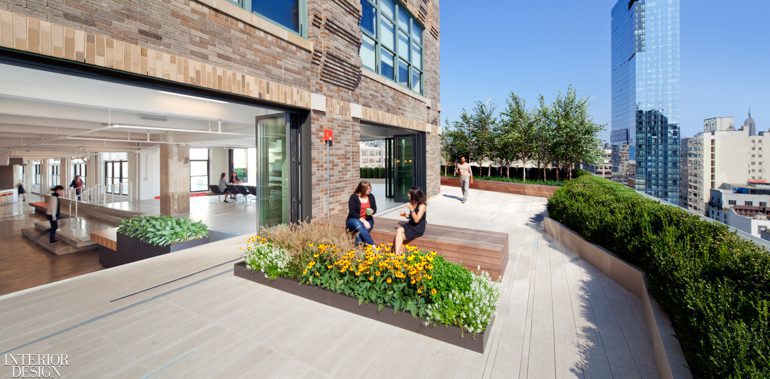
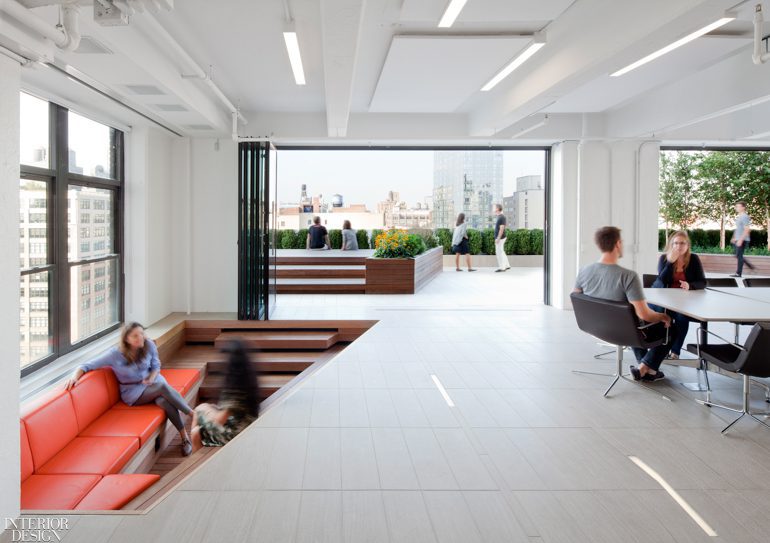
Read next: A+I Designs New Hudson Yards Headquarters for Equinox
